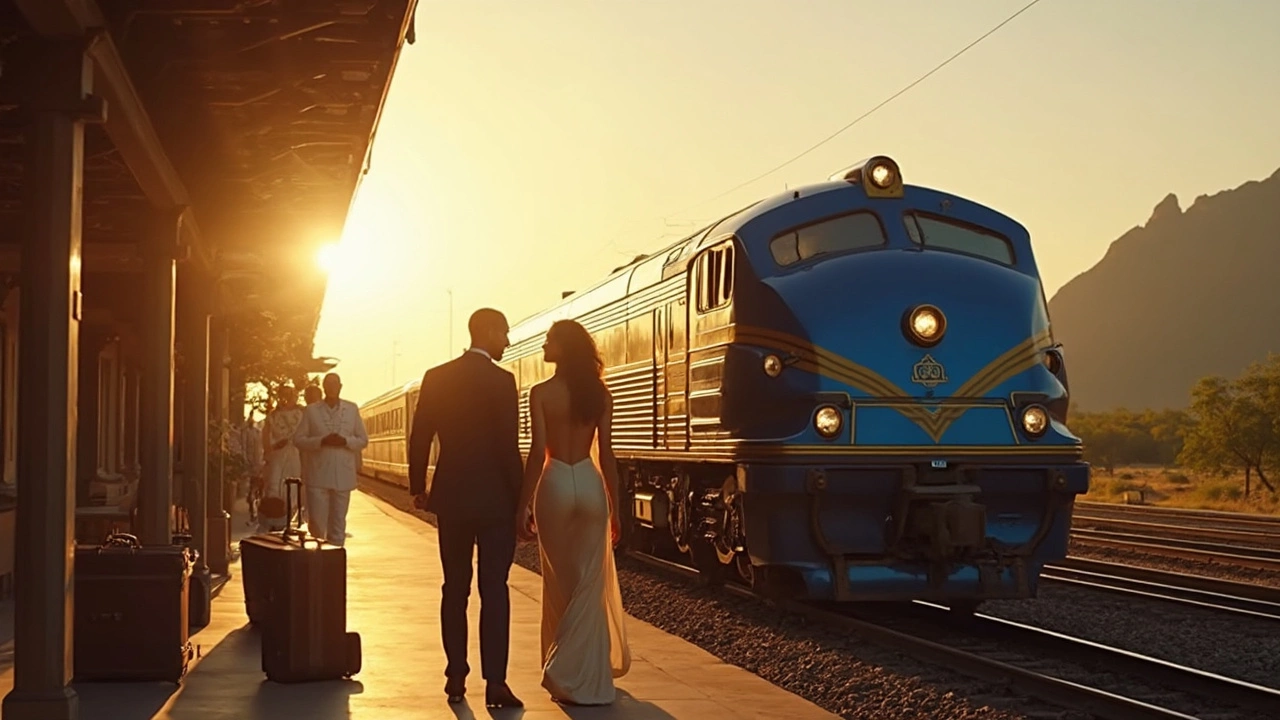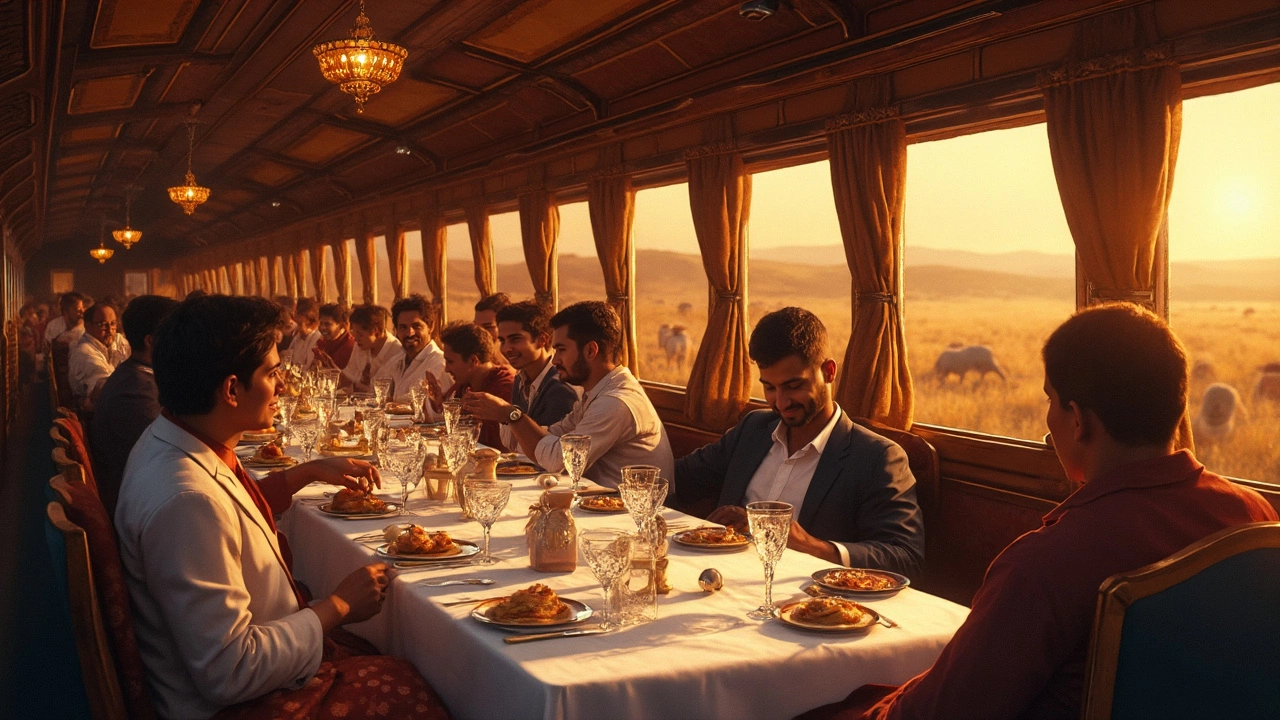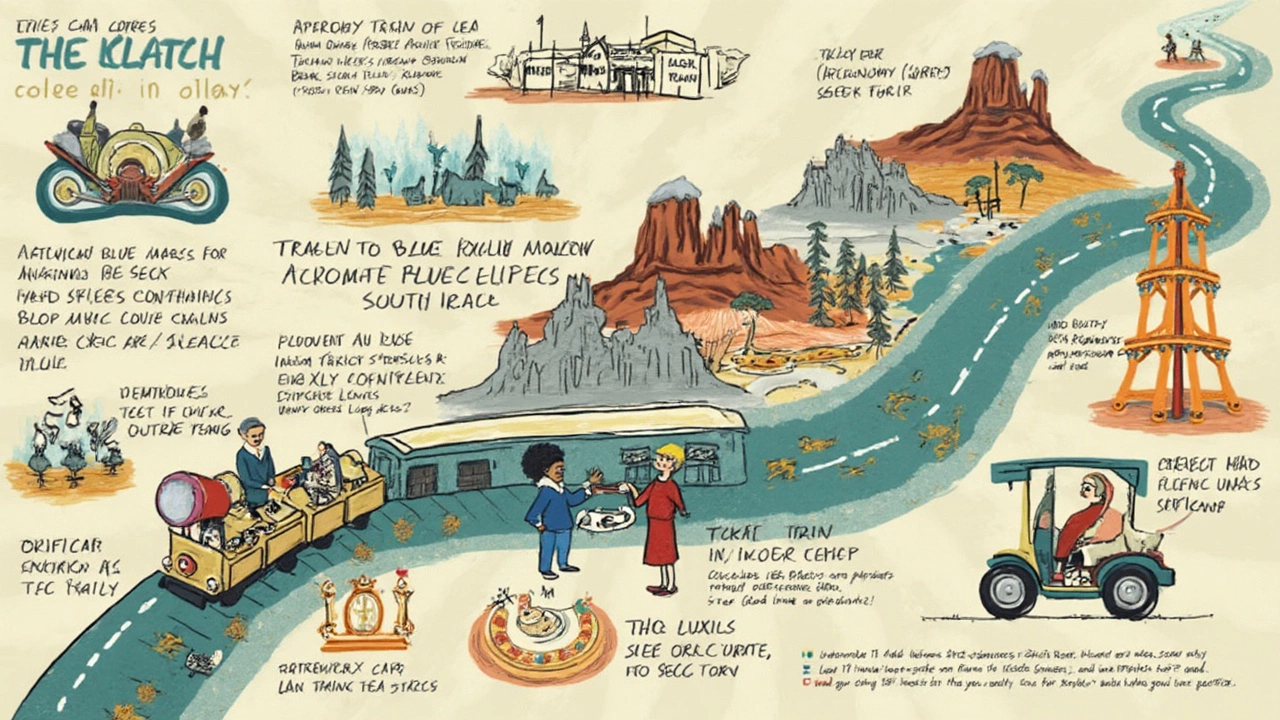Blue Train Ticket Prices in 2025: Cost, Routes, and Travel Tips
 Jul, 2 2025
Jul, 2 2025
When people talk about the world’s most iconic train journeys, the Blue Train always pops up. This isn’t your average sleeper; we’re talking about the closest thing to a five-star hotel on rails. But the first question everyone has before boarding: how much does a ticket on the Blue Train actually cost?
Ticket Prices and What You Get for That Fare
As of July 2025, booking a trip on the Blue Train is still very much a luxury splurge, and it’s priced accordingly. For the classic route from Pretoria to Cape Town—the signature two-night journey—a ticket for a Deluxe Suite starts at around $1,450 per person sharing, one way. This isn’t a typo. Solo travelers can expect to pay a bit more, closer to $2,200 for the same cabin. If you want to ride in real style, the Luxury Suite bumps up your fare to roughly $1,950 per person sharing or about $2,950 if you want it all to yourself.
Now, what do you get for these numbers? The fare covers everything: all your (frankly extravagant) meals, drinks—including good South African wines and premium whiskeys—24-hour butler service, a surprisingly strong Wi-Fi connection in certain carriages, and even cigars in the lounge. You can knock back a glass of champagne while watching the Karoo desert slide past your panoramic window. Off-train excursions—like a guided tour of the Kimberley Diamond Mine—are also included.
Here’s a section for number crunchers and curious minds:
| Ticket Type | Price per person (sharing) | Price per person (single) | Inclusions |
|---|---|---|---|
| Deluxe Suite | $1,450 | $2,200 | All meals, drinks, excursions, butler service |
| Luxury Suite | $1,950 | $2,950 | All Deluxe services + more spacious layout, bath tub |
Kids under 5 ride for free (if you’re daring enough to bring little ones on a luxury train). Ages 5–11 get special rates, usually about half fare. So, families can save a bit, though the train is generally geared for adults. For peak travel periods—think Christmas, Easter, or certain South African public holidays—prices can climb 15–25% above normal fares, so don’t be shocked if you’re quoted a higher number for those dates.

Routes, Seasonality, and Booking Tips
The most famous Blue Train route is the 1,600-kilometer journey between Pretoria and Cape Town, usually running two or three times a week. This classic run takes two nights and lets you see the best slices of South Africa’s landscape: golden grasslands, dramatic mountains, and that endless, ever-changing Karoo. The train stops for a guided excursion at the Kimberley Big Hole, adding a dose of diamond-rush history into the mix.
Occasionally, there are seasonal or specialty journeys, like the Pretoria–Kruger National Park route. That one happens a handful of times a year, mostly during South Africa’s winter and spring (June to September). These specialty runs sometimes fetch higher fares—especially if there’s a public holiday or a big event in town—but the demand for these tickets often outstrips supply by a mile.
- Book as early as you can. Popular dates sell out six months in advance.
- If you’re flexible, look for midweek departures: they’re sometimes cheaper, and the train isn’t quite as full.
- Travel agents can sometimes spot deals or cancellations you’ll never see online. If you have a favorite agent, give them a call rather than refreshing endless booking engines.
- Don’t expect last-minute deals. The Blue Train almost never discounts tickets except in rare flash sales.
Here’s a quick look at popular Blue Train routes and their typical prices:
| Route | Duration | Deluxe Suite (pp sharing) | Luxury Suite (pp sharing) |
|---|---|---|---|
| Pretoria – Cape Town | 2 nights | $1,450 | $1,950 |
| Pretoria – Kruger National Park | 2 nights | $1,700 | $2,400 |
If you’re wondering about luggage, each guest is allowed one large suitcase and one piece of hand luggage. The staff is seriously accommodating—for special needs (dietary, mobility), it’s best to get in touch a few weeks before departure, but they handle requests with real care.
There’s always a dress code on the Blue Train. During the day, ‘smart casual’ is the goal, but after 6 pm, gents are expected to wear a jacket and tie in the dining car. Women dress for dinner. There’s no stuffiness about it, but it is part of the fun—nobody wants to be the one guy in shorts while everyone else is sipping Chardonnay in tuxedos.

The Blue Train Experience: Why Is It So Expensive?
You might look at those ticket prices and wonder: 'What could possibly justify that number?' Easy answer: nothing else feels like traveling on the Blue Train. First, there’s a crazy attention to detail. The staff-to-guest ratio is almost 1:1—that means there’s almost always someone available to refill your glass, bring you canapés, or discreetly give you a heads-up that a herd of antelope is running beside the tracks.
The bedrooms are proper hotel rooms, not tiny bunks. Even in a Deluxe Suite, you get a full private bathroom, marble floors, and the kind of feathered duvets that demand a nap after lunch. If you splurge on a Luxury Suite, space gets even more generous, and you can soak in a full-sized tub while watching the veld drift by.
The food is a highlight. We’re talking five-course, silver-service meals: thick ostrich fillets, Karoo lamb, fresh seafood trucked in from the coast, and desserts that wouldn’t be out of place in a Cape Town boutique patisserie. A lot of the ingredients—biltong, cheese, wines—come from local South African farms, so you can actually taste the terroir of the place you’re traveling through.
One of the big surprises: the lounge cars buzz late into the night. More than a few friendships and business deals have started over the train’s signature Blue Train martinis (pretty potent, so pace yourself). There’s a sense of camaraderie among passengers. People from all countries and backgrounds show up. A recent survey found that over 60% of guests are international, with travelers from the UK, USA, and Australia leading the pack. South Africans tend to take the Blue Train for milestone birthdays, anniversaries, or as an over-the-top honeymoon adventure.
For history buffs, the Blue Train has been running in one form or another since 1923. Winston Churchill, Nelson Mandela, and countless celebrities have ridden these tracks. The train itself got a major upgrade after the COVID era: HEPA air filters, high-speed Wi-Fi (yes, really), and a boost in eco-friendly practices like reduced plastic and plant-based menu additions.
Is there a way to ride the Blue Train for less? Not unless you’re entering a contest or getting invited by a big corporate sponsor. There’s no way around it: you pay a premium for the ‘once in a lifetime’ feeling and the sheer level of pampering.
To sum it up, the Blue Train ticket cost reflects not just transportation but an experience that’s carefully crafted, scrupulously run, and honestly pretty magical. For those who’ve always dreamed of trains, luxury, and seeing South Africa with style, this one’s worth putting on the bucket list.